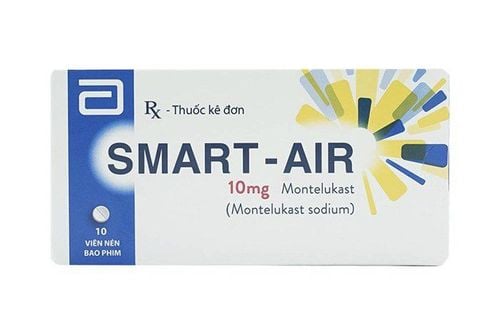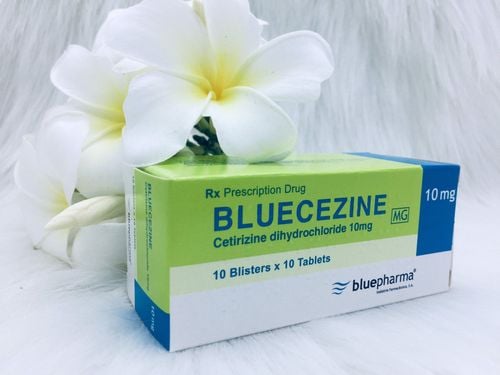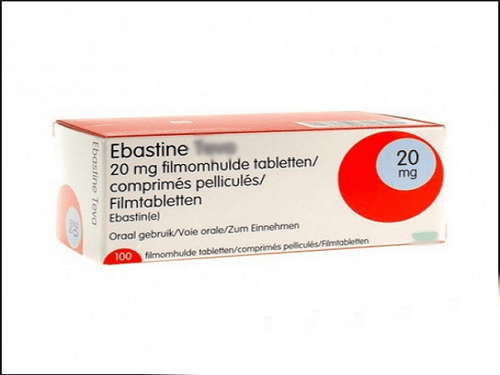This is an automatically translated article.
Nasonex is prepared in the form of a spray, the main ingredient is Mometason furoa. The drug is used in the treatment of allergic rhinitis, nasal polyps, acute rhinosinusitis.
1. What are the uses of Nasonex?
Nasonex is a metered dose inhaler, each spray releasing approximately 100mg of suspension containing Mometasone furoate monohydrate equivalent to 50mcg mometasone furoate.
Uses of Nasonex include:
Symptomatic treatment of seasonal or year-round rhinitis for adults, adolescents and children aged 2-11 years; Prophylactic treatment 2-4 weeks before the start of pollen season in people with a history of seasonal allergic rhinitis with moderate to severe symptoms; Treatment of nasal polyps and related symptoms such as congestion and loss of smell in adult patients ≥ 18 years of age; Treatment of symptoms associated with acute rhinosinusitis in patients ≥ 12 years of age without signs or symptoms of severe infection; Adjunctive antibiotic therapy in acute sinusitis episodes in adults and adolescents ≥ 12 years of age.
2. Dosage of Nasonex
Dosage of Nasonex is classified by disease type and age, including:
Adults with seasonal or year-round allergic rhinitis: 2 sprays (50mcg/spray) in each nostril, 1 time/day (total dose 200mcg) . When symptoms are controlled, reduce to maintenance dose of 1 spray in each nostril (total dose 100 mcg). Conversely, if symptoms do not improve, increase the dose to a maximum of 4 sprays in each nostril/day (total dose 400 mcg), then gradually reduce the dose. The effect of the drug is usually effective early, 12 hours after the first dose. Children from 2 to 11 years old with seasonal or year-round allergic rhinitis: 1 spray (50mcg/spray) in each nostril, 1 time/day (total dose 100mcg), adults should help children when using the medicine. Adults with nasal polyps: 2 sprays (50mcg/spray) in each nostril twice daily (total dose 400mcg), reduce dose to 2 sprays in each nostril, once/day (total dose 200mcg) when symptoms have improved. Adults and children ≥ 12 years of age with acute rhinosinusitis: 2 sprays (50mcg/spray) in each nostril twice daily (total dose 400mcg), consult physician if symptoms worsen during treatment period. Adjunctive treatment for adults and children ≥12 years of age in acute sinusitis episodes: 2 sprays (50mcg/spray) in each nostril twice daily (total dose 400mcg). May increase to 4 sprays (50mcg/spray) in each nostril twice daily (total dose 800mcg) if symptoms do not improve well.
3. How to take Nasonex?
Before the first use, it is necessary to spray 10 times until a uniform mist is seen. If not used within 14 days, you should also pump the primer 2 times until the mist is uniform, then spray into the nose. The spray bottle should be shaken well before each use.
To ensure correct spray and minimize infection, you should follow these steps:
Step 1: Gently blow your nose to clear your nose, shake the medicine bottle gently, remove the dust cap; Step 2: Put your index and middle fingers on both sides of the spray nozzle, thumb on the body of the medicine bottle, point the nozzle away, press your finger down to spray the medicine; Step 3: Close one nostril and insert the nozzle into the other nostril. Tilt your head slightly forward, holding the bottle upright. Begin to inhale gently, while inhaling spray the medication by firmly pressing a spray with your fingers; Step 4: Exhale through the mouth, repeat step 3 for the 2nd spray, remove the nozzle from the nostril and exhale through the mouth; Step 5: Repeat step 3-4 for the other nostril; Step 6: Wipe the nozzle carefully with a clean handkerchief or paper towel; Step 7: Close the dust cover and clean the spray bottle.
4. Contraindications to the drug Nasonex
Nasonex is contraindicated in people with hypersensitivity to any of the components of the drug, who have a localized infection of the nasal mucosa that has not been treated. Not for people with nose surgery or nose trauma because it slows down the healing process.
5. Be careful when using Nasonex
Some notes when using Nasonex include:
People who use Nasonex for a long time should be checked periodically for changes that may appear in the nasal mucosa. If a fungal infection is localized to the nose and oropharynx, the drug should be discontinued and appropriate treatment instituted. If nasopharyngeal irritation persists after spraying, the drug should also be discontinued; Use with caution in patients with pulmonary tuberculosis, fungal infections, bacterial infections, untreated systemic viral infections, or ocular herpes simplex; Caution should be exercised in patients switching from prolonged systemic corticosteroid use to Nasonex. Discontinuation of systemic corticosteroids in these patients may cause adrenal insufficiency for many months until HPA axis function recovers; Studies did not observe growth reduction in pediatric patients receiving Nasonex Aqueous Nasal Spray 100mcg/day for 1 year; The safety of Nasonex for the treatment of nasal polyps in children and adolescents under 18 years of age has not been established; Users of strong immunosuppressive corticosteroids should be warned of the risk of exposure to certain bacterial infections such as chickenpox and measles; The risk of septal perforation or increased intraocular pressure following inhaled corticosteroid use is rare; During treatment if symptoms of severe infection such as fever, severe and persistent pain on one side of the face/teeth or swelling of the face, eyes or periorbital area, or symptoms worsen after a period of improvement.
6. Nasonex drug side effects
Side effects of Nasonex include:
Side effects when treating seasonal and year-round allergic rhinitis: Clinical reports in adult and adolescent patients include headache (8%), diarrhea nosebleeds (8%), pharyngitis (4%), nasal burning (2%), nasal irritation (2%), and nasal ulcers (1%). In pediatric patients, headache (3%), epistaxis (6%), nasal irritation (2%) and sneezing (2%) are possible adverse events. Very rarely, hypersensitivity reactions such as bronchospasm, dyspnoea, angioedema and changes in taste and smell have been reported with Nasonex administration. Side effects when treating nasal polyps, acute rhinosinusitis: Similar side effects to allergic rhinitis. Adjunctive treatment in acute sinusitis episodes: Side effects include headache (2%), pharyngitis (1%), nasal burning (1%), nasal irritation (1%), nosebleeds mild to severe and also present (5%).
7. Drug interactions
Loratadine : Does not affect the concentration and major metabolites of the drug, combination therapy is well tolerated. Quantitative methods with a limit of quantification of 50 pg/ml were not predictive of mometasone furoate plasma concentrations.
8. Nasonex drug overdose
The bioavailability of Nasonex is < 1%, so overdose usually does not require treatment but only needs to be monitored and adjusted to the appropriate dose.
The article provides information on the uses, dosage and notes when using Nasonex. To use Nasonex effectively, patients need to consult and use the drug exactly as directed by the doctor.













